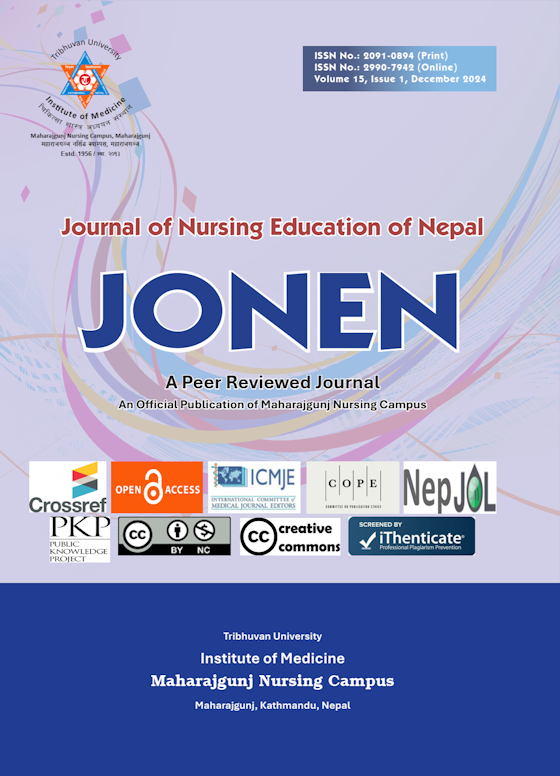Exploration of Self-medication Practice among Medical Students of Kathmandu Valley
DOI:
https://doi.org/10.62143/whs6ck02Keywords:
Medical students, self-medicationAbstract
Introduction: Self-medication has been widely used, most commonly by medical students, for self-diagnosed minor health-related symptoms. Self-medication can be beneficial if used responsibly, however, it can potentially cause harm as well. Thus, the study aimed to identify self-medication practices among medical students.
Methods: Descriptive cross-sectional research was conducted among students studying Bachelor levels in Nursing, Public Health, and Pharmacy at four different colleges in the Kathmandu Valley. Students were selected through a convenient sampling technique. Data were collected using a self-developed Google form. Though the calculated sample size was 447, a total of 285 students filled up the form, representing a 63.7% response rate. Data was analyzed through descriptive and inferential statistics.
Results: The study revealed that nearly all (93.0%) students have used self-medication. Self-medication was high among females (83.0%), students of Bachelor of Science in Nursing (26.0%), and Bachelors in Pharmacy (26.0%). The maximum students used self-medication due to the mildness of illness (63.8%), mostly for the common cold (67.4%). Antipyretics were used by many (71.2%), and the oral route was mostly preferred (97.0%). The pharmacy was the source for self-medication for almost all (98.5%). One-tenth (12.3%) of students experienced side-effects, after which, 74.3% stopped medications and consulted doctors. There was significant association between self-medication among students and the presence of self-medication in family (p-value=0.007).
Conclusion: The study concluded that nearly all students used self-medication due to mildness of illness, mostly for the common cold and antipyretics were commonly used. There was a significant association between self-medication among students and the presence of self-medication in the family.
References
NA
Downloads
Published
Issue
Section
License
Copyright (c) 2025 Journal of Nursing Education of Nepal

This work is licensed under a Creative Commons Attribution-NonCommercial 4.0 International License.









